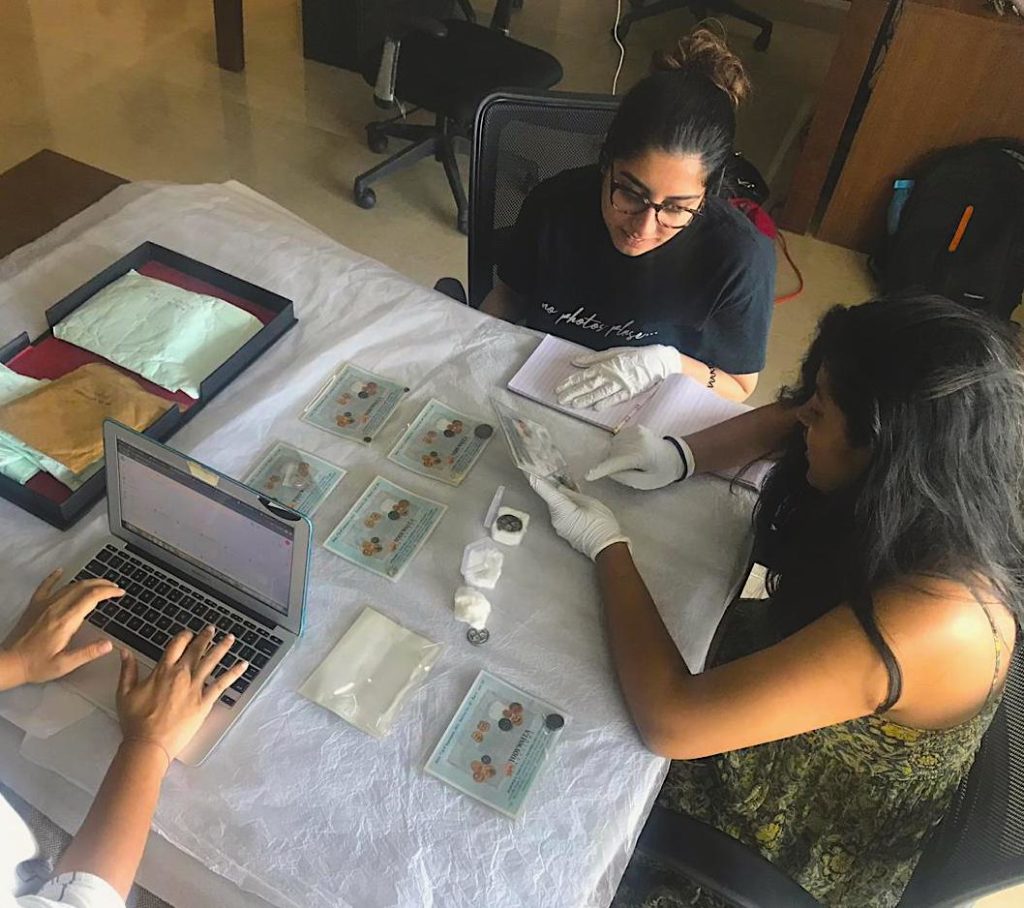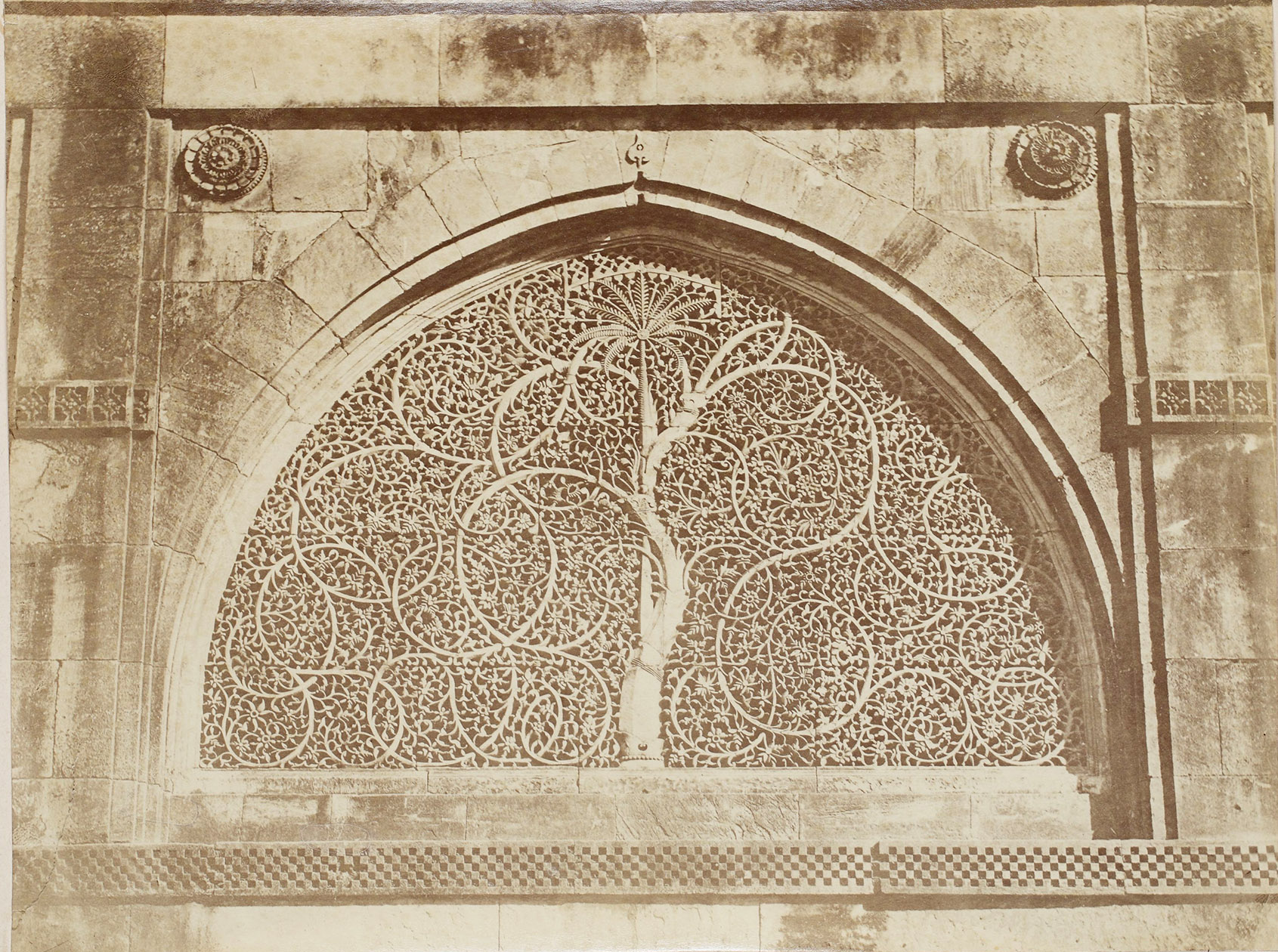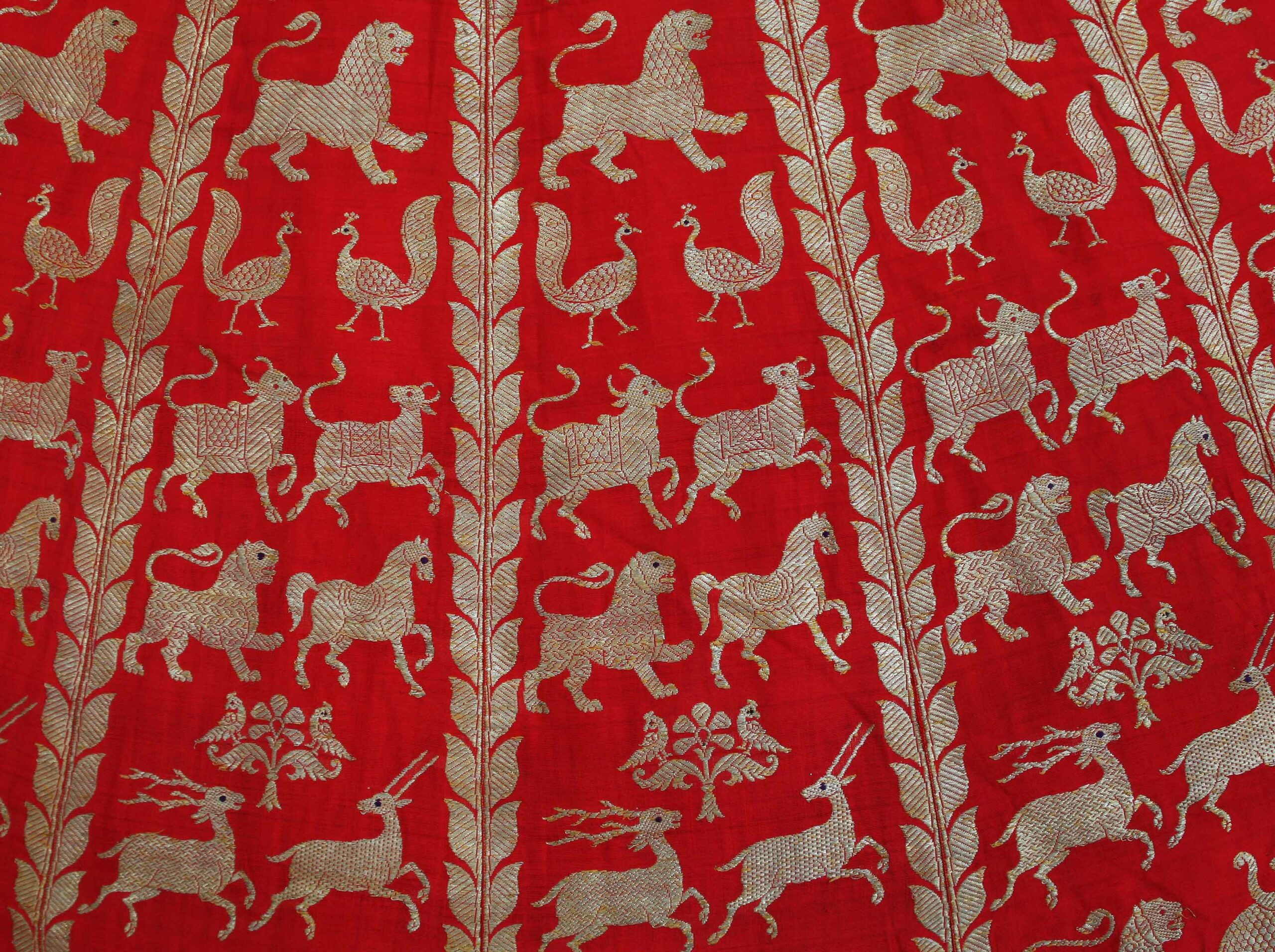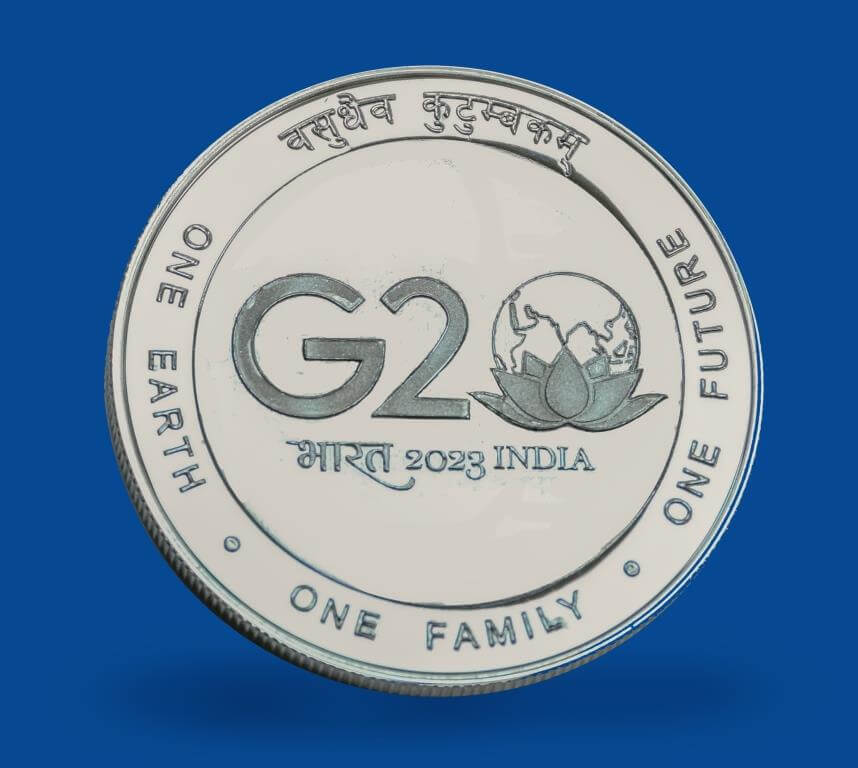
Cataloguing coins at the Sarmaya archive
We often get questions about how to collect, decipher and research old coins from our followers on social media. Some from people hoping to build their numismatics collection and others from those who have stumbled upon a stash of old coins and curious to learn more. To address these queries in the most authoritative way possible, we put your FAQs to two collectors who are lifelong seekers in the field of Indian numismatics.
Umair Shah runs the very popular Instagram page Sikkawala. Umair is a NIFT graduate who works in fashion and owns a creative agency. During the lockdown, he ran a series of popular online numismatics workshops. Although he can’t spare the time for the workshops now, he continues to be an avid collector and evocative storyteller of coins from the Subcontinent.
Mitresh Singh is an active, vocal and respected figure in the Indian numismatic community. A chartered accountant by profession, Mitresh is a fount of practical information and subject-specific insight which he shares generously with aspiring collectors in his book The Astute Collector. Mitresh shared his insights on Mughal coins in a well-appreciated video for Sarmaya. Watch it here.
For the curious coin novice
Let’s first tackle the questions from people who simply want to know more about the coins in their possession. Umair answers these.
‘I’ve found a stash of antique coins. How do I start researching them?’
“In my experience, the coins typically found in a normal Indian home are about 100-150 years old, basically going back about 3-4 generations. These are usually coins of British India or the princely states, both of which are easy to decipher because they have the Roman or the Devanagari script.
“Anything older than that will likely feature the Persian script. With these coins, I advise people to look for the date, which is always in hijri. It’s easy to learn Persian numerals so find the date, convert hijri to Gregorian calendar and see which era it belongs to. You can discover more from there.”
‘Are my vintage coins rare?’
“In fact, you can answer this question yourself by going through auction house catalogues to see if your coin matches something there. Places like Marudhar Arts, Oswal Auctions, Classical Numismatic Gallery put their catalogues up on their websites and make it easy to search even by era.
“If you are trying to estimate the value of a coin, compare it to its lookalike from an auction catalogue. For your coin to command close to the same value, it must be a perfect match with the photograph—in terms of date, symbols, condition etc. Date and mint details especially are very important.”
‘Is the mint always mentioned on a coin?’
“It was Sher Shah Suri who started this system of having mints in every important town. Before that, coins were minted in one place and supplied to different places. His policies were used by Akbar, who minted coins from cities like Delhi, Agra, Lahore etc. With Mughal coins, there’s a good chance that the mint name is visible on the coin.
“With British and republic India coins, there are specific symbols for mints. For eg, coins minted in Mumbai have a diamond shape just below the year, Noida coins have a dot and coins without a symbol were minted in Kolkata, which never had a mint mark. There’s a list of these mint marks of different Indian cities that you can easily Google to see where a modern Indian coin was minted.”
‘Where can I buy or sell coins like these?’
“First, research your coin before even showing to someone to sell it. If there’s a numismatics exhibition happening in your city, visit it. If you think your coin is rare, email an auction house and they will be able to guide you.
“If you’re a beginner, buy only from trustworthy auction houses. I advise people against online dealers, especially, because the photo might not match what you get.”
For the aspiring numismatist
If you are already bitten by the numismatics bug, here is tried-and-tested advice from Mitresh and Umair on how best to care for and build a meaningful collection. In The Astute Collector, Mitresh lists 10 top tips for collectors.
- Build collection slow and steady without being hasty, impatient or greedy
- Invest in books, membership of coin forum/clubs, etc to gain knowledge before buying coins
- Buy the best condition you can afford, there’s a reason why they are in demand and sell fast
- Buy from trustworthy sources; do due diligence and reference checks of seller for first deal
- Obtain ID and correct attribution from experts before buying a rare or expensive coin
- Expand contacts and seller-dealer network to acquire coins from the ultimate source
- Set a budget and stick to it with any overrun being an exception rather than the norm
- Ensure you maintain proper records, and handle and store coins with care, after purchase
- Never try to clean coins except under expert guidance; try with common inexpensive coins first
- Lastly, constantly engage and communicate with your family to build their trust and confidence
Excerpted with permission from The Astute Collector. You can buy a PDF of the book for Rs 250 from his Facebook page—highly recommended for the serious collector.
‘Can I try to clean my coins?’
Umair: “Never clean a coin. The coin is in that condition due to surviving hundreds of years and when you clean it, you depreciate its value. Cleaning erodes a coin’s natural luster, the metal could turn colour and any writing on the coin could get obscured.”
Mitresh agrees that it’s best novice collectors not attempt cleaning coins but for the experienced, he shares in this book his method for cleaning coins of certain metals:
The best way to clean such copper or bronze coins is by dipping them in a glass-bowl containing solution of warm distilled water and 1/4th tea-spoon baking soda. After 2-5 minutes, remove the coins, wash the coin’s surface with distilled water, and gently remove the green spots first by hand, then if required, by a soft tooth brush or wooden toothpick, depending whether they are soft or hard encrustations. Later, dry the wet coin under the sun for 10-15 minutes after which oil, say mustard, may be gently rubbed on the surface, and the coin wiped between fingers and palm or placed under the sun to dry, and then the coin stored safely.
‘What is the best way to store old coins?’
Umair: “In plastic, airtight capsules, which are easily available on Amazon. But if your coins are not very high value, you can even store them in coin sheets placed in paper-holders. If you’re storing them in a box, make sure not to mix metals.”
‘How should I handle old coins?’
Mitresh from The Astute Collector:
Coins should always be held or lifted by its edge/rim, with thumb and index finger, making sure the fingers do not touch or press the coin’s obverse or reverse directly, as the dust, sweat, moisture, oil etc from our fingers may damage the coin’s surface spoiling its beauty, even its value, or leave marks and spots on the surface, invisible to the naked eye but apparent under magnification. Coins should also not be placed flat on the palm for similar reason. Further, it should be ensured that whenever handling coins, the surface where they are being handled should be thick and soft eg mat, cushion, sofa, bed, carpet, pillow, towel, cloth, coin-tray etc to reduce any possibility of damage to the coin if it falls on, say, glass or floor. Wherever possible, collector should strive to handle coins while wearing protective cloth or cotton gloves eg the soft white or green skin-fitting surgical gloves used in hospitals.
‘What is the smartest way to collect coins on a budget?’
Umair: “The smartest way to start is by collecting commemorative coins, minted by the government of India to mark a special event or personality. You can download the complete list of these coins online and use it as a check-list. It’s about developing the habit. Once you get into the habit, you can start focusing on a certain empire or era. But first, start with the change in your pocket. Commemorative coins are also safe to buy from online dealers. Leaving aside the rare ones, a complete collection of commemorative coins could be valued at Rs 20,000. I know someone who made his whole collection just by visiting a kirana store near his house every evening and sifting through the day’s collection of coins. He would replace the value to the storeowner in notes, which made it a win-win situation.”
‘Are people still excavating new types of coins in India today?’
Umair: “Yes, there’s always the possibility of getting new kinds of coins. We don’t have complete documentation of the coins before the British era, like ones minted by the Mughals, the Guptas or the Mauryas. So there’s always the possibility of getting a new type of coin from the Subcontinent.”
‘What is the one quality most important in a numismatist?’
Umair: “The tendency to read and research. You can’t be a good numismatist if you don’t know your coins. You can only build a meaningful collection if you have the knowledge.”



